Roughly Speaking

Brief Synopsis
Cast & Crew
Michael Curtiz
Rosalind Russell
Jack Carson
Robert Hutton
Jean Sullivan
Donald Woods
Film Details
Technical Specs

Synopsis
In 1902, after the death of her father, John Chase Randall, Louise Randall learns that her family is penniless. Eventually, her mother sells her jewelry so that Louise may attend college. As her father had always advised her to aim for the stars, Louise rapidly learns typing and shorthand, determined to "be on the inside looking out." After completing a successful temporary job at a shipyard, Louise and her friend Alice move to New Haven, Connecticut, where they rent a room in the same house as Yale University students Rodney Crane and Jack Leslie. Jack and Alice fall in love and marry, and Rodney proposes to Louise. Although Louise wants to work after marriage, the more conventional Rodney insists that she stay home. Defying convention, Louise does not wear white to her wedding, will not vow to obey her husband and does not take his name. The couple moves to New York City, where Louise gives birth in quick succession to Barbara, John, Rod, Jr. and Louise, Jr. During World War I, Louise plants a victory garden and sells bonds. She finds a huge ramshackled house on the Hudson River and moves her family there. One day, Louise, Jr. gets sick and it is discovered that all the children have polio. Louise nurses the children, willing Louise, Jr. back to health from the brink of death. After their recovery, Louise works hard to help Louise, Jr. overcome her paralysis. When Rod loses his job after the war, Louise keeps her spirits up and gets a job herself. Rod perceives this as a lack of sympathy, and after he finds a job, he falls in love with another woman and leaves Louise. At a friend's costume party, Louise meets Harold Pierson, the black sheep of a wealthy family, who seems to be as much of a free spirit as she. He proposes marriage immediately and Louise accepts. During the prosperous 1920s, they have a child, Frank, and pay off most of their debts. They invest their money in rose bushes, but by the time the flowers are ready to harvest, the market has collapsed. The Piersons' possessions are auctioned off and the family moves to a new city. Harold then invests in a newly designed airplane just before the stock market crash of 1929. During the Depression, the older boys go to Yale and Barbara marries. The remaining family moves to a smaller apartment, and Harold gets a job selling vacuum cleaners. Later he is hired to manage the New York World's Fair. When the United States enters World War II, the boys become soldiers and the underaged Frank asks his parents to sign a release so that he can also join the army. Harold reassures a worried Louise, saying that with her as their example, the boys will be fine. Harold and Louise agree that America is a wonderful country because its citizens are free to dream.

Director

Michael Curtiz
Cast

Rosalind Russell

Jack Carson

Robert Hutton
Jean Sullivan
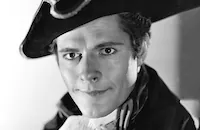
Donald Woods

Alan Hale

Andrea King

Ann Doran

Mona Freeman

Robert Arthur
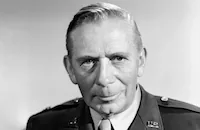
Ray Collins

John Qualen
Kathleen Lockhart

Ann Todd
Cora Sue Collins
Andy Clyde

Arthur Shields
Helene Thimig

Greta Granstedt
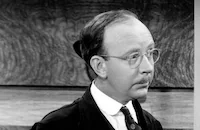
Hobart Cavanaugh

Eily Malyon

Craig Stevens

John Alvin
Mary Servoss
Francis Pierlot
Manart Kippen
George Carleton
George Meader

Frank Puglia
Chester Clute

Irving Bacon
Barbara Brown

Sig Arno
Ann Lawrence
Mickey Kuhn
Johnny Treul
John Calkins
Richard Wimer
John Sheridan

Jo Ann Marlowe

Patsy Lee Parsons
Gregory Muradian

Johnny Sheffield
Buddy Gorman
Grandon Rhodes
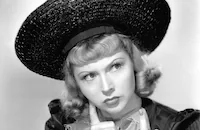
Joyce Compton
Frank Darien
Charles Jordan
Charles Coleman
Russell Simpson
Antonio Filauri
Victoria Horne
Crane Whitley
Garry Owen
John O'connor
Bobby Hyatt
Harry Harvey Jr.
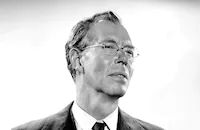
Walter Baldwin

Emmett Vogan
Jody Gilbert
Paul Brooks

Lee Phelps

Lynne Baggett
Payne Johnson
Charles Sullivan
William Moss
Bill Hunter
James Farley
Joe Bernard
Joe Devlin
George Riley
Claire Meade
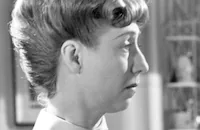
Marie Blake
Cyril Ring
Frank Mcclure
George Lloyd
Jack Carr

Pierre Watkin
Charles Anthony Hughes
Barry Bernard
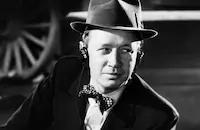
Eddie Acuff
Harry Seymour
John Miles
John Mylong
Jeanne Wardley
Constance Purdy
Ruth Warren

Lillian Bronson
Richard Bartell
Jack Raymond
Ferris Taylor
Richard Kipling
Crew
Gerald W. Alexander
Travis Banton
Henry Blanke
Frederick De Cordova
Roy Davidson
Paul Detlefsen
Gus Edwards
Leo F. Forbstein
Charles David Forrest
Hugo Friedhofer
Robert Haas
Frank Heath
George James Hopkins
Isham Jones
Irving King
Hans Koenekamp
James Leicester
Warren Lynch
Edward Madden
Louise Randall Pierson
Cole Porter
Leah Rhodes
William Schurr
Max Steiner
Dolph Thomas
Joseph Walker
Robert G. Wayne
David Weisbart
Perc Westmore

Videos
Movie Clip


Trailer
Film Details
Technical Specs

Articles
Roughly Speaking
Curtiz also had an eye for unorthodox, but inspired, casting. Jack Carson had been playing mostly supporting parts, usually loudmouthed bores and buffoons. The role of Pierson's feckless second husband in Roughly Speaking was complex, and producer Henry Blanke had suggested Ray Milland or George Brent. Carson was Curtiz's choice, and his vibrant performance nearly stole the film.
Rosalind Russell had gone from being typecast as a pallid ingenue to being typecast as a knockabout comedienne. And while Roughly Speaking had plenty of comedy, Russell proved, with Curtiz's help, that she also had the considerable dramatic range the role required. In an interview at the time, the director said that, along with Ingrid Bergman, Russell was "one of the finest actresses in Hollywood. No phony, no fake, no fool the audience." For her part, Russell spoke fondly of the notoriously volatile Hungarian, calling him "a soft pushover when he's off the set, away from the camera. A perfectionist, a terribly hard-working, able, ambitious man driven by a love for his work."
Author Louise Randall Pierson wrote the screenplay for Roughly Speaking, and was on the set as technical consultant throughout the filming. She and Curtiz fought over the script. "He reduces me to ashes constantly," Pierson said. Curtiz dismissed her work by saying, in his usual fractured English, "God-damned symbolism, terrific dull, take away, do better." But like many victims of Curtiz's criticism, Pierson's reaction was equal parts amusement, annoyance, and acceptance.
The screenplay was unusually long for a film of that era, probably because Roughly Speaking covered so many years. And maybe for the same reason, the film went over budget and over schedule. In preview screenings, Roughly Speaking ran about two and a half hours, though it was cut down to about two hours in the final release version. Some critics complained about the hurried pace of the film, and box office receipts were lower than usual for a Curtiz film.
But even though Roughly Speaking was not a huge hit, it was generally well-received, and was an important film for three participants. Based on her excellent performance in Roughly Speaking, and her rapport with Curtiz, Rosalind Russell was considered the leading contender to play Mildred Pierce (1945), Curtiz's next film. But Joan Crawford, who had recently been signed to a contract by Warner Brothers, lobbied hard to win the part. Even though Russell didn't play Mildred, the range she showed in Roughly Speaking did help her get a string of heavily dramatic roles, including her Oscar®-nominated one in Mourning becomes Electra (1947). Plus, two of her co-stars in Roughly Speaking did win juicy parts in Mildred Pierce - Jack Carson and young Jo Ann Marlowe, who had played one of the Pierson children; she would play Mildred's younger daughter Kay.
Director: Michael Curtiz
Producer: Henry Blanke
Screenplay: Louise Randall Pierson, based on her book
Cinematography: Joseph Walker
Editor: David Weisbart
Costume Design: Leah Rhodes, Travis Banton
Art Direction: Robert Haas; Set Designer, George James Hopkins
Music: Max Steiner
Cast: Rosalind Russell (Louise Randall), Jack Carson (Harold Pierson), Ann Doran (Alice Abbott), Donald Woods (Rodney Crane), Ray Collins (Mr. Randall), Kathleen Lockhart (Mrs. Randall), Robert Hutton (John, age 20-28), Mona Freeman (Barbara, age 15-20).
BW-117m.
by Margarita Landazuri

Roughly Speaking
Quotes
Trivia
Notes
Roughly Speaking was based on the life of Louise Randall Pierson. Warner Bros. purchased the film rights to her story for $35,000, according to a July 13, 1943 Hollywood Reporter news item. Pierson was the mother of noted writer-director Frank R. Pierson, who won an Academy Award for Best Original Screenplay for the 1975 film Dog Day Afternoon. Rosalind Russell and Jack Carson reprised their roles in a Lux Radio Theatre broadcast on October 8, 1945.















